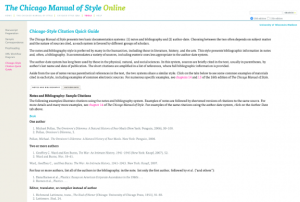 |
December 9, 2016 Volume 22, Number 48 |
Research and Education |
General Interest |
Network Tools |
In the News |
Research and EducationBack to Top | |
 |
|
 |
|
 |
|
 |
|
 |
|
 |
|
 |
|
 |
|
General InterestBack to Top | |
 |
|
 |
|
 |
|
 |
|
 |
|
 |
|
 |
|
 |
|
Network ToolsBack to Top | |
 |
|
 |
|
In the NewsBack to Top | |
Scientists Use Ancient Records of Eclipses to Show that Earth's Rotation is Slowing | |
|
Ancient eclipse records show that days on Earth are getting just a little longer Ancient eclipses show Earth's rotation is slowing Astronomers Are Using Ancient Eclipse Records to Solve a Cosmic Mystery Measurement of the Earth's rotation: 720 BC to AD 2015 Solar Eclipses of Historical Interest Historical solar eclipse maps On Tuesday, a team of astronomers published a study in the Proceedings of the Royal Society A demonstrating that in the year 720 BCE, earth made a complete rotation in just about eighteen hours. In other words, over the past 2,740 years or so, our days have gotten longer. The research team, led by retired astronomer Leslie Morrison, reached this conclusion after closely examining hundreds of historic records from China, Greece, the Middle East, and Europe that documented solar and lunar eclipses. The team compared these records to calculations of when and where eclipses "should" have occurred based on the Earth's present rotational speed, the Earth's orbit around the sun, and the Moon's orbit around the Earth. In doing so, the team surmised that the Earth's rotation has slowed approximately 1.8 milliseconds per day over the course of a century - an amount that adds up to about six hours over the course of almost three millenniums. Morrison notes that historians may be able to use this research to better understand ancient history: "We can now ask historians, 'Look, this eclipse went bang through Cairo on that day, isn't there any record? Or maybe in Thebes?' That must have made an enormous impression on ancient Egyptians." [MMB] The first three links reveal three different articles that summarize this fascinating research, highlighting different aspects of the study and its findings. The first comes from Deborah Netburn at the Los Angeles Times; the second is from Sid Perkins at Science; and the third from Rebecca Boyle at The Atlantic. Those interested in reading the full study can do so via the fourth link. Readers interested in learning more about famous eclipses throughout history will want to check out the fifth link, NASA's page dedicated to Solar Eclipses of Historical Interest. This page highlights eclipses noted in a variety of historical texts, including The Odyssey. The final link takes readers to an impressive assortment of eclipse maps collected by Geographic Information Systems (GIS) professional Michael Zeiler. These maps date back to 1654 and provide readers with insight into the history of astronomy. | |





